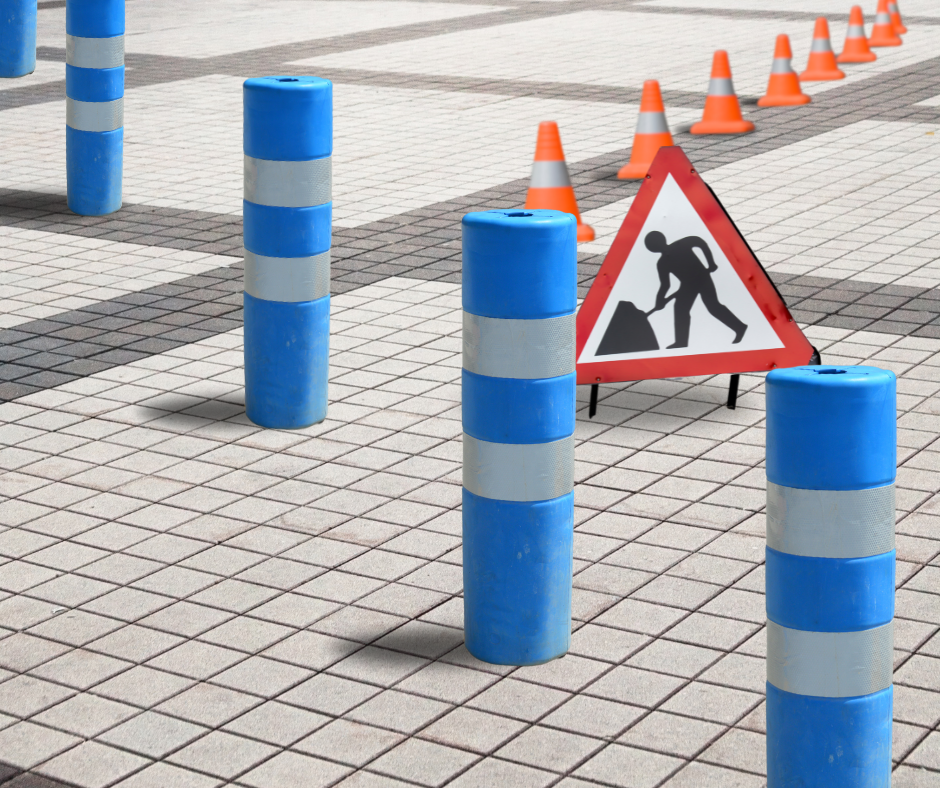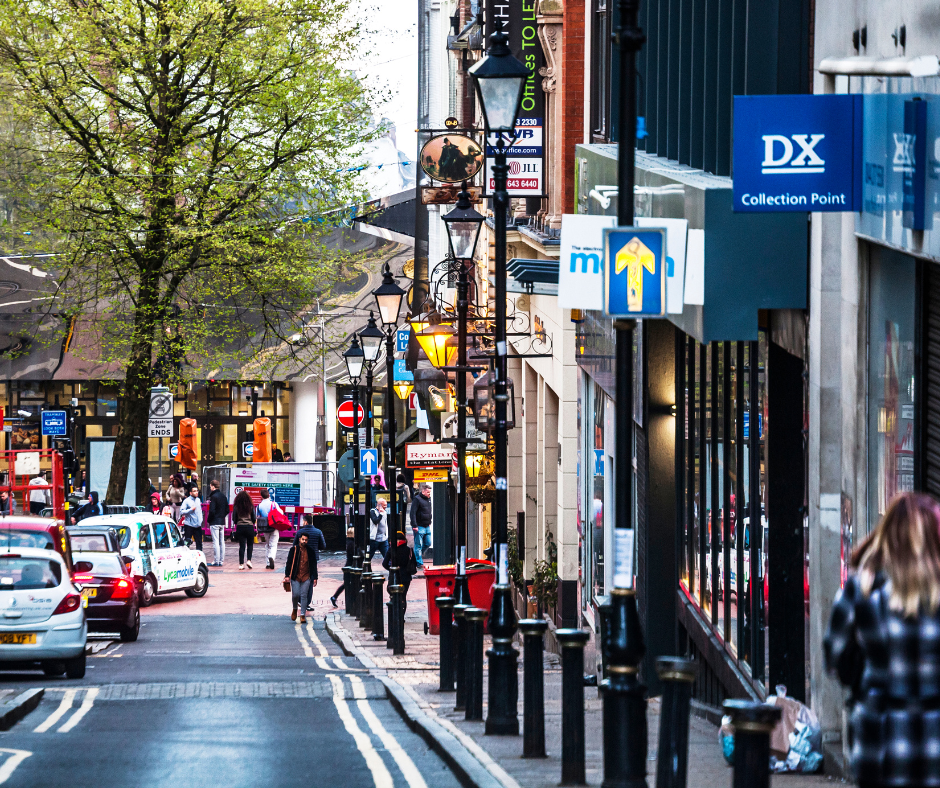
In a previous discussion, I touched upon the unique challenges of using public transport when you’re visually impaired. However, the journey begins long before one reaches the bus stop or train station.
Let’s delve deeper into the challenges of navigating the built environment with visual impairment.
A Town Steeped in History
My wonderful hometown, with its rich medieval history, has been my sanctuary for years. Its streets, alleys, and landmarks are etched in my memory and Harper, my trusty guide dog, and I have become a familiar sight to many locals.
This should mean that we have no problems getting to the office, shop, or my favourite local pub, but the town’s historical charm brings with it a set of challenges.
Narrow and uneven pavements, remnants of a bygone era, make navigation tricky. As a guide dog owner, Harper and I navigate as a duo, making these tight spaces even more challenging.
Flagstones, often dislodged by vehicles, present hazards, especially for those using a long cane. A misstep can lead to painful jabs and bruises!
The Changing Urban Landscape
The post-lockdown world seems to have transformed urban landscapes. Streets are now adorned with promotional A-boards, outdoor dining setups, and more. While they add vibrancy to the town, they also present a maze of obstacles for Harper and me.

Bin day in residential areas feels like navigating an obstacle course, with wheelie bins scattered haphazardly around the pavements.
The Unseen and Overlooked Dangers
Being visually impaired means I’m often more attuned to ground-level challenges. Wet leaves, discarded bottles, or even a stray toy can turn a simple walk into a treacherous journey.
But the dangers aren’t just underfoot. Overhead obstructions, like low-hanging signs, hanging baskets or exuberant tree branches, have caught me off guard more times than I’d like to admit. It can be quite unpleasant to suddenly get a face full of wet leaves or holly!
These unexpected challenges require constant vigilance and adaptability.
The Pavement as a Car Park
A regular challenge encountered is the number of cars and vans that park on the pavement. This is particularly an issue in residential areas where street lighting may not be as good as it is in town centres.
There have of course been multiple campaigns aiming to outlaw pavement parking, and existing legislation does make it illegal to cause an obstruction, but the problem persists.
Delivery and taxi drivers in particular frequently pull up wherever they can and leave vehicle doors open as well as parking on the footpath.
I have managed to walk straight into an open car door on more than one occasion – painful!
Navigating the Maze of Construction
Urban development, while essential, brings its own set of challenges. Scaffolding, with its maze-like structures, often narrows pathways, pushing pedestrians closer to the road.
The cacophony from construction sites can be disorienting, masking other essential auditory cues. These disruptions require one to be even more alert and adaptive.
The Modern World’s Distractions
Today’s digital age has brought with it a new set of challenges. Individuals engrossed in their devices often remain oblivious to their surroundings. This lack of awareness can lead to accidents, especially for those with visual impairments.

From personal experience, I’ve had people trip over Harper simply because they were too engrossed in their phones. This modern distraction is a growing concern and highlights the need for greater public awareness.
The Silent Threats on the Road
Electric vehicles, with their near-silent operations, pose a unique challenge. Their quiet approach can be particularly dangerous for those who rely heavily on auditory cues.
E-scooters, often ridden by youngsters unaware of legal restrictions, can be just as perilous. These modern modes of transportation, while eco-friendly, require a new level of awareness and adaptability.
The Cyclist Conundrum
While many cyclists adhere to safety norms, there’s a significant number who flout basic rules. Pavements are not meant for bicycles, yet it’s a common sight in many areas.
The lack of bells, lights, and a general disregard for the Highway Code by some cyclists poses a significant risk to pedestrians, especially the visually impaired. This growing concern calls for stricter regulations and public awareness campaigns.
Shared Spaces: A Modern Experiment
The concept of shared spaces, where drivers, cyclists, and pedestrians coexist, is gaining popularity. However, these spaces, while promoting inclusivity, can be chaotic. The ambiguity of such zones, especially when combined with features like ‘floating bus stops’, can be daunting for many, including me.
These modern urban experiments, while innovative, require careful planning and consideration for all, especially people living with sight loss.
Embracing Independence Amidst Challenges
Life as a visually impaired person is filled with unique challenges. Every step outside is a testament to resilience, awareness, and adaptability. My upbringing instilled in me a fierce sense of independence, allowing me to face these obstacles head-on.
Recognising these challenges is the first step towards navigating them safely and confidently.
It’s a journey of continuous learning, adaptation, and growth and it’s why we regularly provide training in getting out and about safely with our Rehabilitation Team.
If you or someone you know is living with sight loss, get in touch with us to understand the support that’s available.
Martyn Parker
Community Engagement and Fundraising Officer